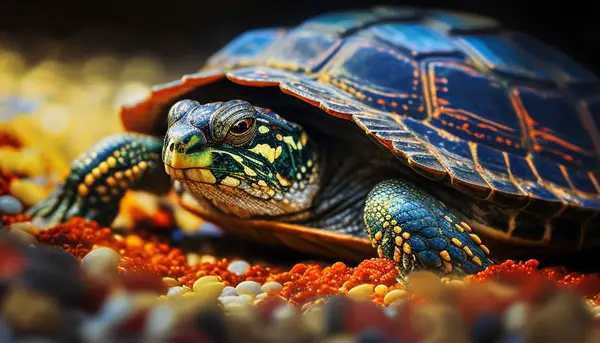The Pros and Cons of Keeping Turtles as Pets
So you’re planning to get your first pet turtle but still not sure if this is the right pet for you? If yes, you’ve come to the right place. Knowing the advantages and disadvantages of a pet turtle will help you weigh them and make a more informed decision on whether to get a turtle friend or not.
The pros of keeping a turtle include low maintenance, fascinating behavior, varieties of species to choose from, etc. However, there are also some cons of having a turtle such as their demanding specific care requirements, not being cuddly, unsuitability for homes with kids, and long lifespan.
In this article, you’ll discover full details about the benefits and drawbacks of owning a pet turtle. By the time you’re done reading this guide, you’ll have made up your mind on whether you should own a turtle or not.
Pros and cons of keeping pet turtles
Contents
Turtles are popular pets today but they may not be for everyone. Before you get one, read the following list of the pros and cons of turtle ownership to help you make a more informed decision.

Here are the pros of keeping pet turtles:
Low maintenance pets
One of the beauties of having a turtle for a pet is that it doesn’t require a lot of daily maintenance compared to other pets such as dogs and cats. You don’t need to take it for daily walks or even groom it every day.

This makes a great pet if you have a busy life and don’t have enough time for your pet. As long as you feed your turtle a balanced diet and keep it in a clean environment with optimal conditions, it will always be a happy soul!
A wide variety to choose from
Turtle pets come in a variety of species to choose from for a pet. They come in varying sizes, appearances, care requirements, and even costs. You can easily get a beginner-friendly species that’s not too demanding.
Or if you want, you can go for an exotic species like the matamata! For instance, the red-eared slider is a popular choice for many beginners because it’s easy to care for, has eye-pleasing looks, and is quite cheap!
Fascinating behavior
Pets generally have quite fascinating behaviors which can make you want to observe them all day.
You’ll enjoy watching them as they go about various activities like swimming, basking in the sun, exploring their habitat, digging in their tanks, chasing down prey, and interacting with you while inside their enclosure.

Some pet turtles are pretty active and like playing. This fascinating behavior means they can be entertaining to watch all day.
For instance, the red-eared sliders, painted turtles, and yellow-bellied sliders are quite active and are always entraining themselves in their enclosure. If you’re feeling down, watching your turtle can help raise your mood!
Long Lifespan
Turtles are generally long-lived. Most pet turtles will live for several decades with good care. This can be a positive aspect of the pet but it can also be a downside for some (see more details in the cons section later in the post).
Now, the positive side of this long lifespan is that you’re assured of your turtle giving you companionship for many, many years to come. You may even end up passing your pet down to your generations.
Turtles don’t require constant interactions
While pet turtles are friendly, they’re also not needy and don’t require constant interactions with their owners. They’ll enjoy seeing you around and even recognize you, but they’d appreciate it if you don’t keep handling them or give them constant attention as a dog does.
This can make it a great choice of pet for folks who are always busy and have little time for their pets. You can leave your pet turtle for long periods of time without worrying about upsetting it. You just need to make sure you feed it well and maintain good living conditions in its enclosure.
Here are the cons of keeping pet turtles:
Long lifespan
Some of the most popular species of turtles used as pets tend to love for a long lifespan. A good example is the red-eared slider which can go for 20 to 30 years in captivity. This can be a drawback given that some owners are usually not prepared for such longtime commitments and they end up releasing them into the wild.

Specific care requirements
Different species of turtles also have special requirements that you should meet to ensure your little friend’s health and well-being.
For instance, you’ll need to provide your turtle with a suitable habitat that mimics its natural habitat in the wild, UV lighting to compensate for sun rays, and a healthy diet.
In addition to that, you’ll need to do regular vet visitations (once every month) to keep your turtle healthy. These checkups will require around $50 -$150 depending on the tests done on your turtle as well as any medications offered.
Changing the water regularly and cleaning the enclosure regularly are other tasks that make occasional care for your turtle demanding for some folks.
Turtles are not cuddly
If you’re looking for a turtle that you can interact with and hold, then a turtle isn’t a good choice for you. Different turtle species are generally less cuddly and like to be left alone most of the time. In fact, you’re advised to keep handling your turtle to a minimum. If you keep trying to pet him, he may even try to bite you!

High initial costs involved
The initial cost involved in getting a turtle and setting up its environment can get quite high. Firstly, you’ll need to spend anywhere from $20 to $200 to buy a pet turtle from a pet store or a breeder, depending on the species you choose. Some exotic species will cost you even more.
In addition to that, you’ll need to spend on basics such as a turtle tank, lighting, filtration system, heater, food, and a variety of other accessories needed for a perfect turtle habitat setup. The enclosure alone can range from $50 to $500 depending on the size and number of turtles you plan to keep.
Your turtle can make you sick
Turtles are carriers of salmonella, which can easily make you fall sick. Young turtles below 4 inches are even prohibited in the US to help curb the spread of this bacteria to humans.
However, you can keep yourself safe by washing your hands thoroughly every time you handle your turtle. You can also try to avoid handling as much as possible.

For a home with small, curious kids, it may not be worth the risk to keep a turtle that can potentially make them sick around.
Plus, the fact that some turtles have a high temperament and can bite kids who may keep bothering them.
Final Verdict
A turtle can be one of the best pets you’ve ever owned. There is a wide variety of pet turtles to choose from depending on your personal preferences. Whichever turtle you choose, you’ll enjoy benefits such as low daily maintenance, fascinating behavior you can watch all day for entertainment, and a long lifespan.
However, keeping a pet turtle also has a few downsides such as high initial costs, demanding occasional maintenance, demanding specific care requirements, and the fact that they aren’t cuddly. The turtle’s long lifespan can be a disadvantage for some folks who don’t have plans for such long-life commitments.


